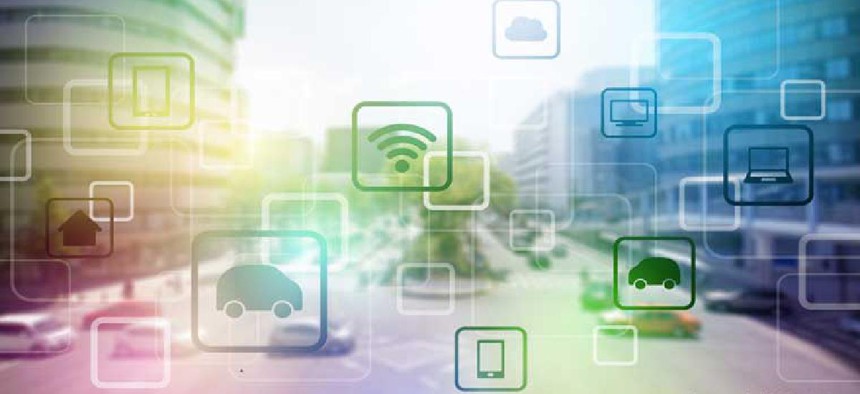Citizen engagement and public service in the era of the IoT


Connecting state and local government leaders
The internet of things is amplifying the number and variety of touchpoints available to reach citizens and giving municipalities access to data that can help shape service offerings.
There was a time when civic engagement meant encouraging citizens to walk into city hall to ask questions and file paperwork. Then when the internet became available in every home in America, citizens wanted on-demand access to municipal information and resources.
Soon, merely having a website was not enough. Local governments had to offer robust web-based self-service features that enabled citizens to simplify their government interactions by conducting transactions without ever leaving their homes. Then began the mobile revolution. Suddenly, civic engagement meant connecting to citizens on a personal, immediate and public platform, regardless of their location. Next, social media became a standard communication strategy, and local governments focused on building meaningful moments of engagement with social-minded citizens.
Today, technology is again redefining the terms of civic engagement and public service thanks to the internet of things -- the proliferation of internet-connected devices.
For local governments responsible for communicating critical information and delivering valuable services that impact the daily lives of their citizens, the need for a diversified communication strategy has been essential for a decade. The IoT, however, is amplifying the number and variety of touchpoints available to reach citizens and allowing for access to data that can help shape service offerings. For this reason, local governments must embrace this latest technology and find ways to leverage the ubiquitous connectivity to improve the ways that citizens are living their lives.
How to offer citizens meaningful services using the IoT
Any city, county, village or township unsure about the benefit from leveraging the IoT to embrace the next wave of citizen engagement should consider these scenarios:
Facility cost control. Internet-enabled HVAC systems installed in local government facilities can send data to a central hub where heating and cooling systems can be optimized to ensure comfort for staff and citizens when buildings and rooms are in use and minimize wasteful spending when they're not.
Tourism services. Digitally connected cities can notify residents and visitors of ongoing local events, favorite venues and volunteer opportunities by making push notifications and text messages available through mobile apps.
Voice-accessible website content management. Allow a staff member with mobility issues to add an event to a municipal website’s event calendar using a voice command given to an Amazon Echo personal home assistant.
Weather-related hazards preparation. By using data sensors in riverbanks, experts can warn government officials of rising water levels that could indicate an impending flood risk for nearby residents.
Public transit convenience. Community buses, trains and trolleys fitted with GPS tracking technology can provide the exact location of public transit vehicles at all times, helping commuters better plan their commute.
Pollution monitoring. Smart sensors placed outside public facilities can monitor the air for increased levels of pollen, smog and other pollutants and send air-quality warnings to civic leaders and citizens who have subscribed to an alert service.
At the core of every one of these examples is a central theme: Local government using technology to help citizens to live their lives better. Whether the improvement is marked by greater convenience, improved health and safety or job enablement, technology can help local government accomplish its core function: enhancing the quality of life for its residents -- its taxpayers and voters.
The future is now
Civic leaders must start preparing their communities and their engagement models for the future. Embracing the next evolution of citizen engagement is about more than keeping up with technology trends or demonstrating a community's facility with digital innovation. It is about leveraging the interconnectivity provided by the IoT to play an integrated, relevant role in citizens' lives.




